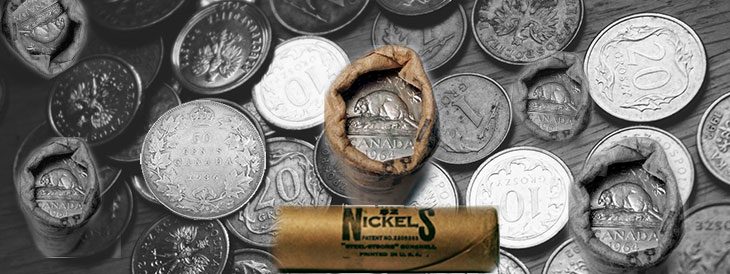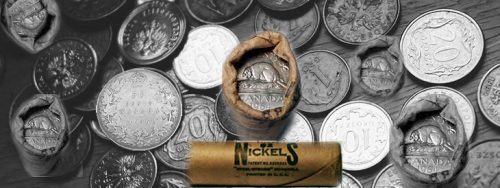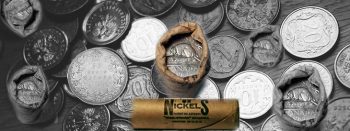Last updated on May 2nd, 2024 at 03:35 pm
Last Updated on May 2, 2024 Posted by Colonial Acres Coins
Coin roll hunting in Canada can turn out to be a both fun and lucrative activity. Is the Canadian nickel worth any money? There are certain coins you’d be wise to keep based on their numismatic and metal value, because coin rolls containing Canadian nickels before a certain date are more valuable due to a higher amount of nickel and because of rarity. Here are coins to be on the lookout for when Canadian coin roll hunting.
Coin Roll Hunting Canada: Nickels Minted Before 1982
In the early 1980s, nickel prices increased significantly, making it more expensive to use for minting coins. Starting in 1982, the nickel content of Canadian five-cent coins started to decrease. Starting in 1982, the Royal Canadian Mint started making them out of a copper alloy called cupronickel that only contained 25% nickel. As of 2000, five-cent coins are made of steel with nickel plating.
Because of the value of nickel, the Royal Canadian Mint not only decreased the content of the metal in five-cent coins but took them out of circulation to melt them down. Therefore, pre-1982 nickels can be valuable not only for their 99.99% nickel content but because of their relative rarity.
Rare Nickels Minted Between 1922 and 1942
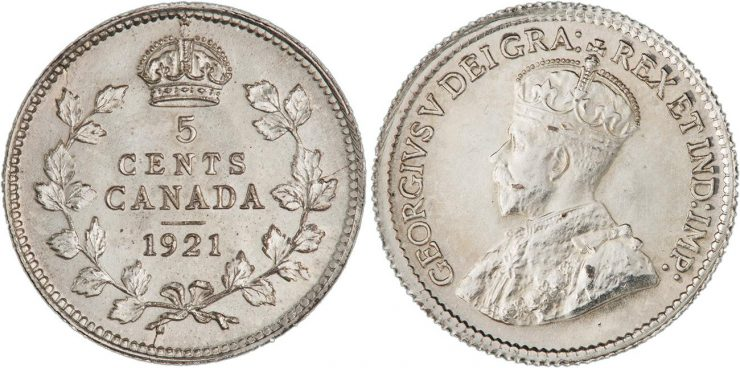 Five-cent Canadian coins have existed since 1858, but it was only in the early 1920s that they became nickels. Prior to that time, five-cent coins consisted of silver, and because the amount of silver in the coin couldn’t be worth more than 5 cents, they were very small and easily lost.
Five-cent Canadian coins have existed since 1858, but it was only in the early 1920s that they became nickels. Prior to that time, five-cent coins consisted of silver, and because the amount of silver in the coin couldn’t be worth more than 5 cents, they were very small and easily lost.
By 1920, the government had already reduced the silver content in Canadian coins because of increasing prices and eventually decided to make five-cent coins out of nickel. At the time, Canada was the largest producer of nickel in the world, so the metal was more abundant and therefore cheaper, meaning that the size of the coin could be increased. Nickel was already in use in the American five-cent coin, which served as a model for the new Canadian nickel.
The first Canadian nickels date back to 1922, making them 100 years old. With the passage of time and efforts by the RCM to melt down old nickels, five-cent pieces from this era have become increasingly rare and therefore more valuable. Coins minted from 1922 to 1936 bear a likeness of King George V, which also makes them objects of historical interest.
Coins To Support the War Effort
Nickels Minted From 1942 to 1945 and From 1951 to 1954
During World War II, nickel was very important to the war effort for the manufacture of weapons and other equipment. During this time, the RCM started manufacturing nickels first from an alloy of zinc and alloy called tombac and later out of steel plated with chrome. It again manufactured five-cent coins out of steel in 1951 to 1954 due to the Korean conflict, even though the name “nickel” stuck and would continue to do so.
In 1955, the RCM went back to manufacturing Canadian five-cent coins out of nickel. Two years previous, the 5-cent piece began to bear the likeness of Queen Elizabeth II, who had acceded to the throne in 1952 following the death of her father, King George VI. Designed by sculptor Mark Gillick, the original portrait of the Queen to grace Canadian coins was known as the laureate portrait because it featured her crowned with a wreath of laurel. This was to evoke an association with ancient deities as well as classical victors in the martial and athletic arenas. This design continued until 1964, after which it was replaced by a more mature portrait of the Queen. Laureate nickels are increasingly rare and therefore valuable Canadian nickels.
Coins To Avoid Confusion: The 12-Sided Nickel
During World II, the nickels made of tombac to support the war effort had more of a bronze-like appearance than the silvery sheen of 99.99% nickel. As a result, people started confusing them with pennies, which consisted of copper. The government looked for ways to differentiate between the two similarly coloured coins. Up to that point, nickels had been completely circular, but in 1942, the RCM started minting nickels with a 12-sided shape. The new appearance of the coin would make it easier for Canadians to tell the different coins apart at a glance. The angles made from the intersecting sides of the 12-sided coin would also allow Canadians to differentiate the nickels by touch, without looking at them at all.
The 12-sided nickels presented their own challenges. The collar dies used to produce them would develop cracks in the corners due to weakness that would develop with the high striking pressure required for a notoriously hard metal such as nickel. Nevertheless, the 12-sided nickels remained in use throughout the Korean War and for a decade afterward, even after the RCM went back to using 99.99% nickel, and the chance of confusing them with pennies all but disappeared. In 1963, the RCM went back to making round nickels. Canadian nickels from 1942 to 1962 are 12-sided shapes, which is part of the reason why they tend to be more valuable.
Start Coin Roll Hunting in Canada at Colonial Acres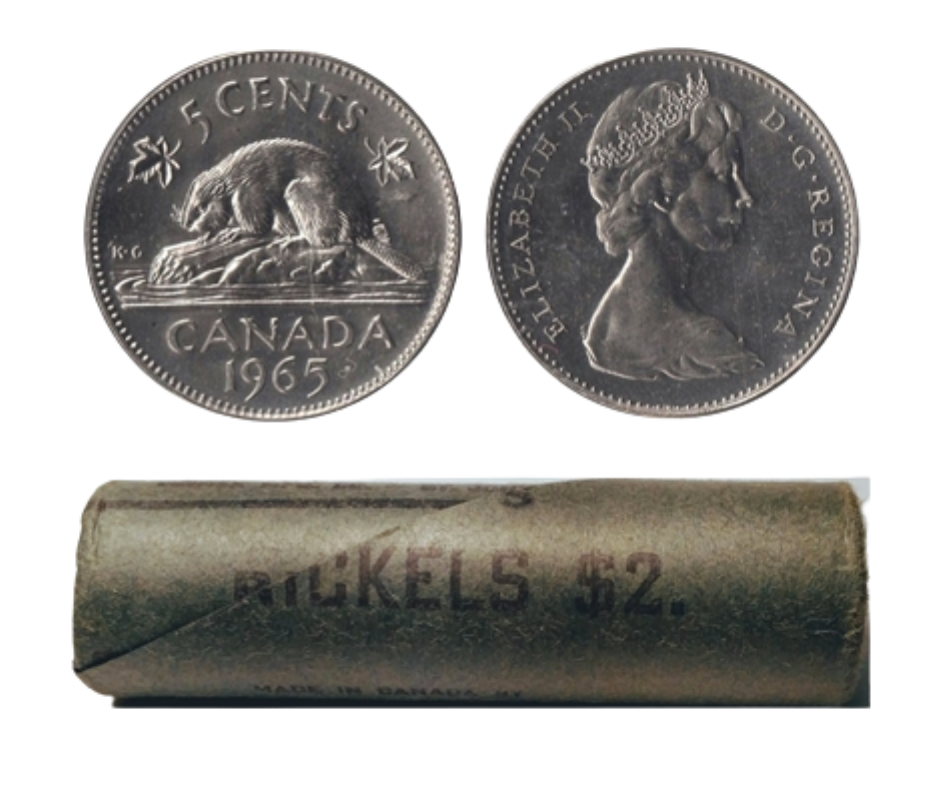
If you like treasure hunts, you’ll love Canadian coin roll hunting. To make your new hobby as rewarding as possible, you need to follow a few tips and tricks. You have already taken the first few steps by deciding that you are going to hunt for rolls of nickels and by learning about which ones are the most valuable. The next step is to decide where you are going to store your coins.
To avoid corrosion, you need to choose a storage place where the temperature and humidity remain fairly consistent throughout the year. A general rule is that if the room is comfortable enough for long-term human occupancy, it is probably a safe place to store your coins.
Another important tip for coin roll hunting in Canada is knowing where to look. Colonial Acres offers rolls of nickels dating back approximately 60 years in their original packaging. It is important to know exactly what you are looking for, and our numismatic experts can help you find it.

